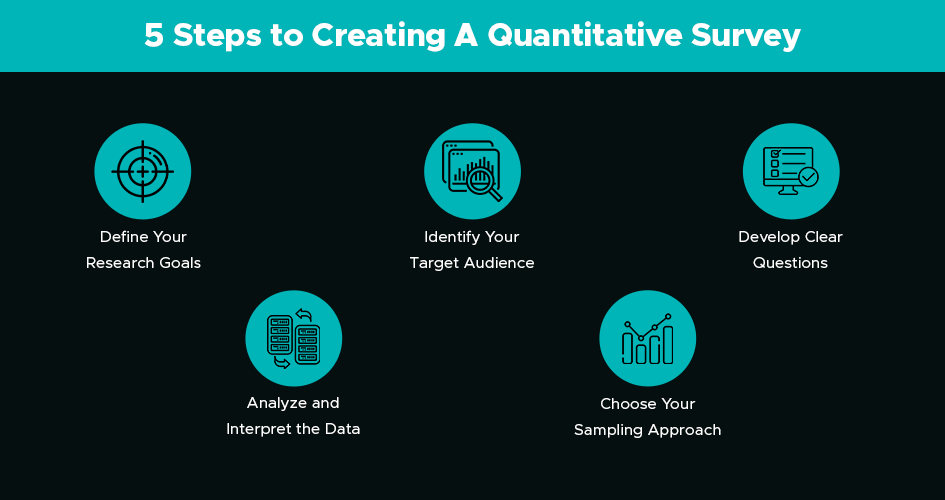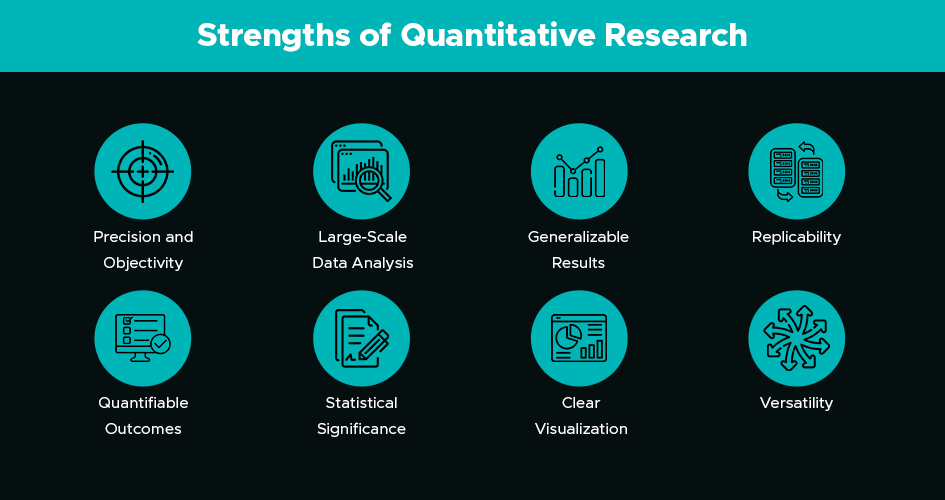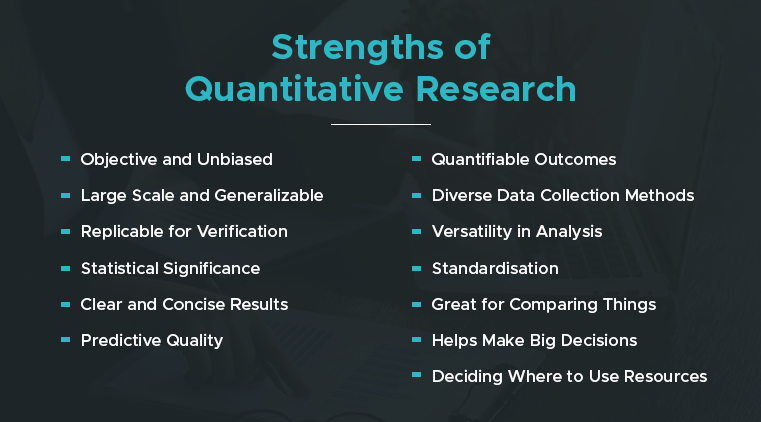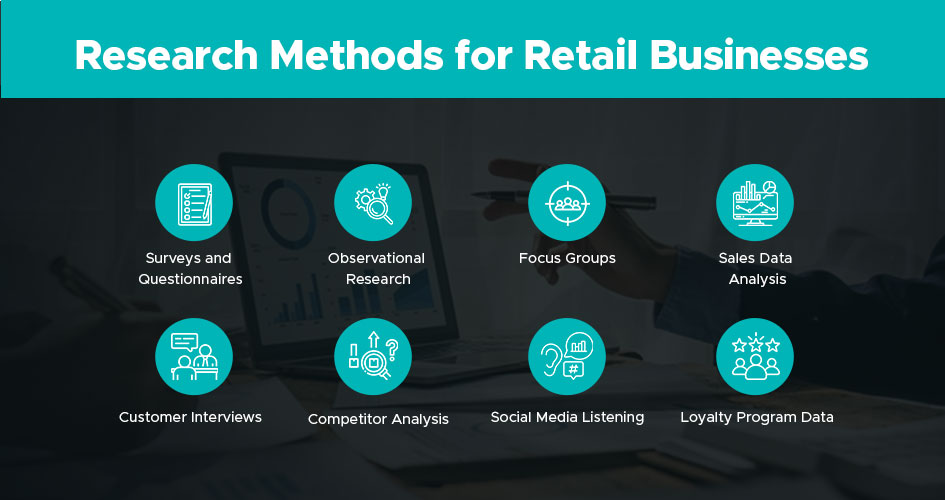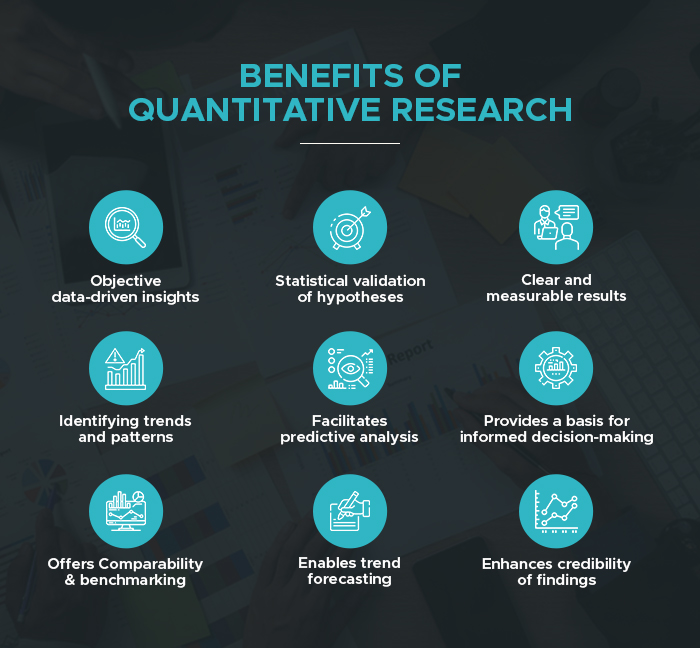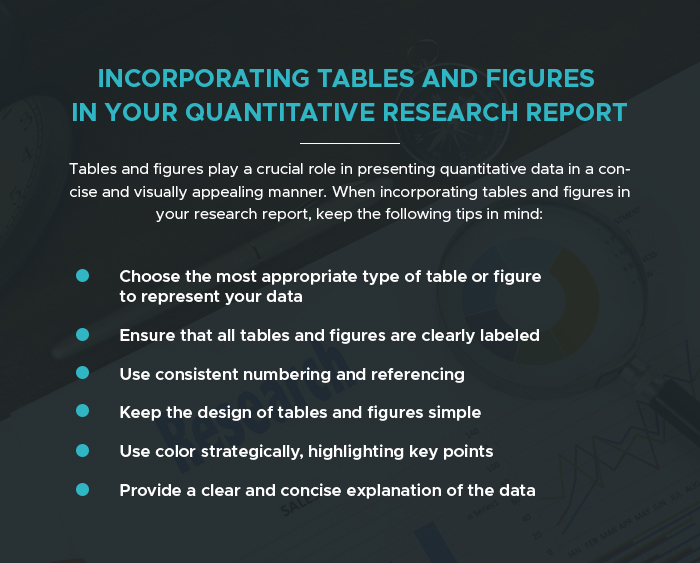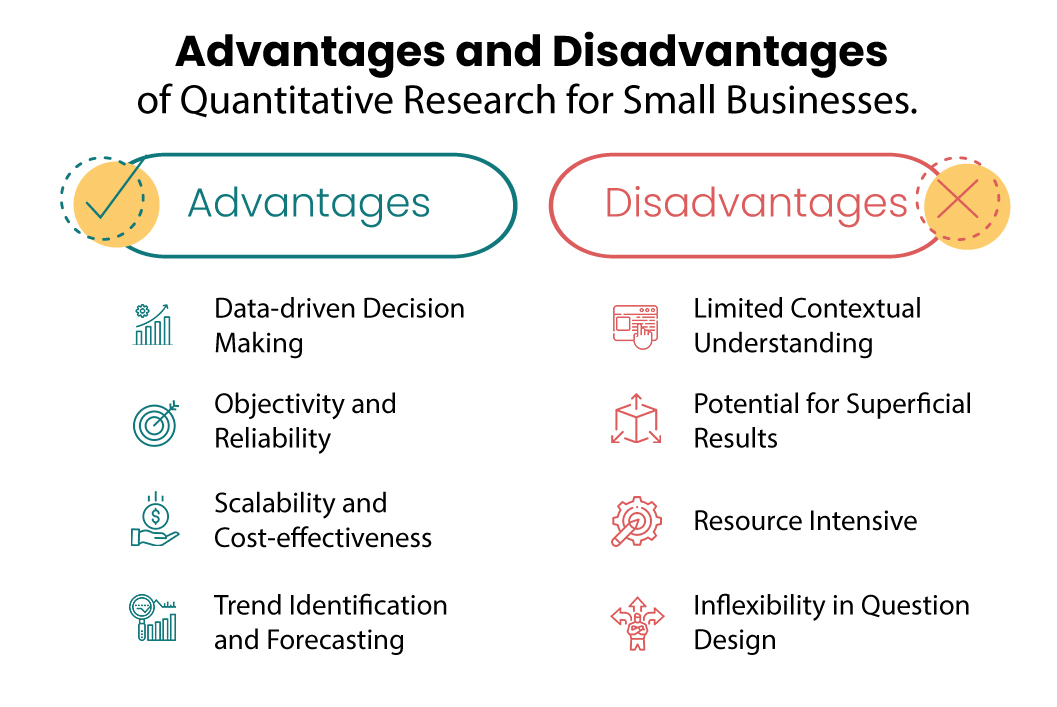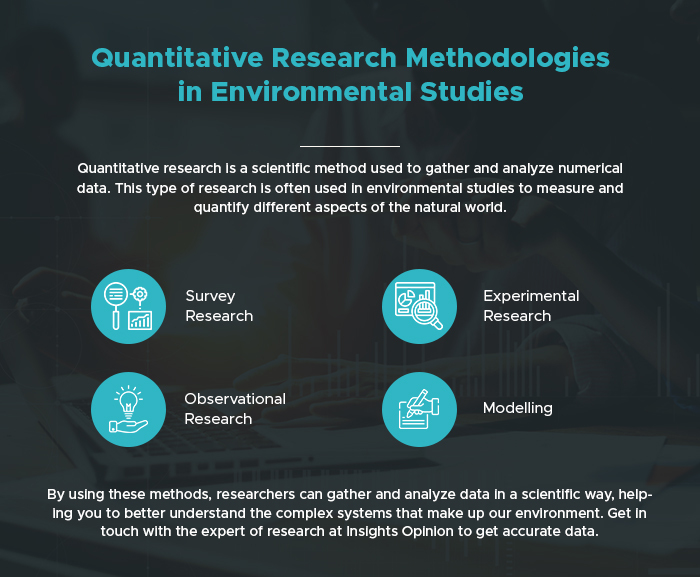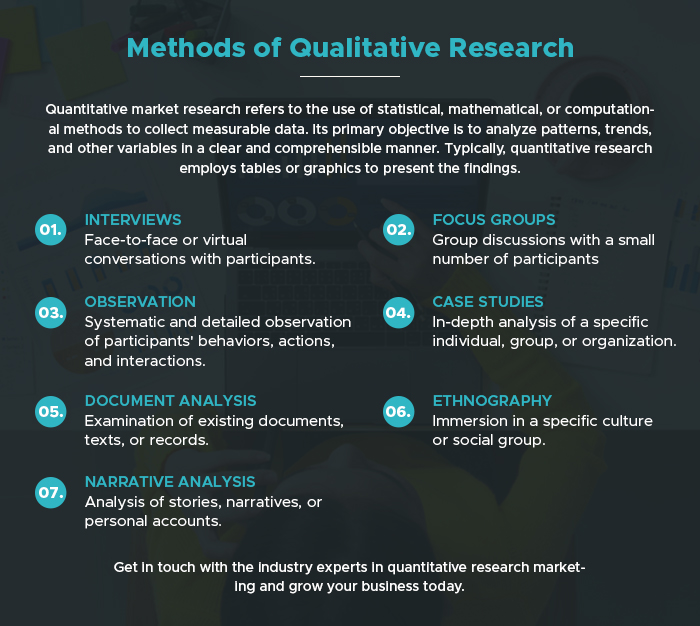Why Does Your Business Need Qualitative Research?
The benefit of qualitative research or qualitative data analysis is that it gives you a comprehensive image of your consumers. The following are some of the reasons why the qualitative research approach is essential for any business.
Qualitative Research Approach Brings Flexibility
Using qualitative project management or research in all facets of your business’s operation gives you flexibility and fluidity. The main implication of the qualitative research approach is that the qualitative data analysis must be relevant to the subject matter and should give the best possible path ahead.
Suppose the data collection source does not meet the requirements. In that case, the qualitative research company has the liberty and flexibility to alter the source or the data collection method to adhere to and respect the quality elements.
Qualitative Research is Based on Human Perceptions and Experiences
Since the best qualitative research platforms understand the value of qualitative research, the data collected and obtained is heavily dependent on human experiences and observations.
The human mind operates on two main functioning modes, one centred on more facts and numbers and the other on our subconsciousness. The qualitative content analysis considers a person’s gut reactions and instincts since they result from experiences and observations accumulated over time.
Qualitative Data Analysis Has a Predictive Character
The data produced and gathered has a predictive character, which is one of the benefits and merits of the qualitative research approach. The key reason for this is that the qualitative research company focuses on one specific group to gather data on the subject matter and that specific customers share the frequency and are like-minded.
All of this leads to data that is verified on quality parameters. It may be a disadvantage for the research aspect, but the data gathered is viable and useful for the organisation that requires it.
Qualitative Research Breeds Creativity
One of the primary reasons that industry experts and professionals recommend businesses to comprehend and implement a qualitative research approach is that it incorporates the value of creativity in its technique. Since it is based more on emotional responses, experiences, and perceptions, the mode of operation allows consumers to voice their opinions honestly, transparently, and authentically.
They are given the flexibility of creative expression, which aids the research team in producing genuine outputs and final products.
Qualitative Research is a Fluid Process
Another advantage of the qualitative research approach is that it is an open-ended, fluid procedure. The research is not time-limited because it must conform to and meet quality requirements.
It also has an emotional component because it is based on human experiences and perceptions you cannot get in a certain questionnaire or time frame. The replies acquired are mostly influenced by the person’s actions or impacts on their conduct in various life events. Therefore the study must be open-ended in nature.
Qualitative Research Gives Insights and Information About the Business
In today’s highly competitive and ever-changing market, it is critical for businesses to communicate with their clients on a psychological and emotional level. It provides a deeper grasp of the consumers and target audience’s actual wants and developing desires. It assists businesses in curating, designing, planning, and manufacturing product offers that meet the wants and expectations of their customers.
Furthermore, it promotes the creation of industry-related data and insights that benefit the whole industrial domain and its enterprises. As a result, a qualitative research approach must be used to capture and comprehend the prospective customer’s behavioural psychology.
Qualitative Research Saves Cost
One of the most significant benefits of hiring a good qualitative research company for your business is that it saves money without affecting the total marketing and sales budget. You can implement the qualitative research approach with smaller sample numbers compared to other research approaches.
Its result is swift and legitimate, giving the research team confidence to carry forward with the project as good and beneficial data has been supplied to the firm management.
Qualitative Research Provides Extra Material for Your Company’s Marketing and Creative Teams
As previously said, the qualitative research approach has an artistic element that works as an intrinsic component. And when more data is acquired based on real feelings, experiences, and observations while putting human consciousness and psychology at the forefront, the material becomes more authentic and fruitful.
It greatly assists the creative, advertising, and sales departments in planning, designing and implementing genuine and effective brand and promotional campaigns. To summarise, it is a win-win scenario for all parties concerned.
It greatly assists the firm’s management in attracting the target audience and market through unique and out-of-the-box promotional and marketing concepts and campaigns. Plus, all of it assists in boosting the general sales and earnings of the organization achieving all the short and long-term targets.
Example of How Qualitative Research is Conducted
One way the qualitative research approach is conducted is through one-on-one interviews. One-on-one interviews can be conducted over the phone or in person. It is a more personalised method that gives a greater knowledge of the clients without outside influence. Participants are generally more at ease with this method than with any other.
Quantitative Research
Quantitative market research collects customer data on attitudes, behaviours, views, and other characteristics to support or refute a hypothesis. This is done by gathering numerical data, which is easily measurable to establish statistical significance.
Quantitative research or quantitative data analysis, as it may be called, gathers numerical data through closed-ended questions, such as Likert scales or questionnaire forms. Once you’ve distributed your survey to your intended audience, you can quickly quantify the answers for each answer choice.
The questions you pose must be impartial to gather and interpret respondent data. Numbers are fundamental to quantitative data collection services. It employs statistical analysis and data to spotlight critical information about your company and market.
This sort of data, obtained through multiple-choice surveys, can assist you in gauging interest in your firm and its offers. For example, quantitative research can help answer problems like:
- Is there a demand for your goods and services?
- How well-known is your product or service in the market?
- How many individuals are considering purchasing your goods or service?
- What kind of personalities are your most loyal customers?
- What are their purchasing patterns?
- How are your target market’s demands changing?
- How long are visitors remaining on your business website, and which website are they leaving to?
Most significantly, quantitative market research services are statistically legitimate since they are mathematically founded. This implies you use its results to forecast the future of your business.
Quantitative data analysis and quantitative data collection services may sound stressful, which is why some business owners seek the services of a good quantitative market research agency.
This gives them a chance to focus on the more important aspect of the business while the quantitative market research companies do their job.
Why Your Business Needs Quantitative Market Research Services
Below are some of the importance of quantitative market research services for your business.
Quantitative Data Analysis Services Establishes Connections Between Variables
Quantitative research is a conventional scientific procedure that attempts to establish causal correlations and measure their strength and relevance. It has emphasised quantifiable metrics, and numerical, mathematical, or statistical market research gathered over time using sampling methods or by manipulating existing statistical data.
Good quantitative market research companies emphasise comparing, finding the link between the uncontrolled and outcome variables, and generalising the acquired data over many consumer groups.
Depending on the scenario, the research design might be experimental, demonstrating causality, or descriptive, identifying connections between variables. The quantitative research methods are investigative, and the outcome is objective, statistical, and logical.
The importance of quantitative market research to your business is that it helps you establish a link between variables using a systematic manner on a sample representing the whole consumer base.
Quantitative Market Research Gives Data That is Objective and Dependable
Quantitative research is a way of collecting trustworthy and accurate business outcome data. This is accomplished through analysis and measurement. It can illustrate why the data is obtained as well as how it is statistically treated.
It also deals with study results concerning relationships and reports on unexpected incidents during data collection. The study specifically shows why planned, and real analysis differ from one another. It offers a good notion of how to deal with missing data.
The importance of quantitative data analysis to your organization is that it aids in the objective and dependable acquisition of data, which is then presented in a logical, analytical, and complete manner, highlighting crucial results.
Quantitative Market Research Helps in Measuring The Consumer Experience
The importance of quantitative market research is that it is simple to assess data and demonstrate outcomes using objective data. It gives descriptive data that a quantitative market researcher may split down to discover differences between certain groups, such as age groupings.
Quantitative data analysis forecast is based on numerical facts and is tough to refute or dispute. One of the major advantages of doing quantitative market research is the capacity to transform data into forecasts and quantify customer experience. Businesses rely largely on their consumers and have attempted to focus on service-oriented operations. Customer services and performance development and measurement are critical to them.
Quantitative research is essential for obtaining an accurate depiction of the consumer experience and making significant changes in performance. The significance of quantitative market research and quantitative data analysis in gauging customer experience cannot be overstated.
It uses a large enough sample size to obtain valid, accurate, and trustworthy outcomes in consumer insight. It uses survey-based research to collect input related to population attitudes and thoughts. Quantitative research for marketing assists in addressing critical sections of the customer journey to learn what consumers think about their experience so you can make educated business decisions based on this input.
Another function of quantitative market research is discovering the multiple impediments to sales effectiveness and service excellence. The study provides an opportunity to keep connected with client trends through selected survey forms that are scheduled regularly to obtain a fast response.
Example of How Quantitative Research is Conducted
The most effective quantitative research method is questionnaires and surveys. You can deliver questionnaires and surveys containing a list of acceptable responses to a wide sample group.
The options narrow the field of possible responses, resulting in a more thorough survey. The survey is measured by visually showing the proportion of respondents who picked each response. Quantitative data analysis has gotten much easier with online survey questionnaires.
Why Does Your Business Need Qualitative And Quantitative Research?
The simplest answer to whether it is possible to combine qualitative and quantitative research is a resounding YES. Usability testing incorporating qualitative and quantitative data analysis for company improvement may be both complementary and productive.
Various data have different values depending on where you are in your business. The qualitative research approach is useful in the early phases of a firm since it allows you to evaluate choices, identify problems, and make modifications.
Although quantitative market research is beneficial throughout the business development process, it can have a higher impact later on when a product is ready to be published or utilised. You might want to track which customers appreciated it the most and which did not.
While each approach has benefits and drawbacks, you are not compelled to select one. Use both data to understand the “what” and “why” questions. Quantitative market research can only tell you whether the metrics you monitor are rising or dropping, not why. The “why” of a user study may be the most important part, and qualitative data analysis will assist in answering that query.
The ideal usability studies contain quantitative and qualitative data analysis to fully comprehend the client experience, efficiency, and the identification of any faults or business defects.
Where to Get The Best Qualitative And Quantitative Research For Your Business?
There are several quantitative market research companies and qualitative research platforms available. But only a few offer quantitative and qualitative research. One such company, and one we recommend, is Insights Opinion, whose simple platform gives users the statistics as well as the explanation behind the findings.
Their team is well-versed in how you intend to utilise the data and what you ought to know. They adhere to strict quality standards; consequently, their qualitative and quantitative market research methodologies produce reliable findings. Visit the Insights Opinion website now to get one of the best qualitative and quantitative data analysis services.
Conclusion
Customer research methodologies, both qualitative and quantitative, collaborate to completely grasp the usefulness of data and customer preferences and to assist in producing the greatest resources available. The more value you derive from your optimization process, the more you will improve it.
Using the best qualitative and quantitative market research agency is important to build a better business. If you’re ready to improve your business with qualitative and quantitative market research methods, visit Insights Opinion and get started immediately.
